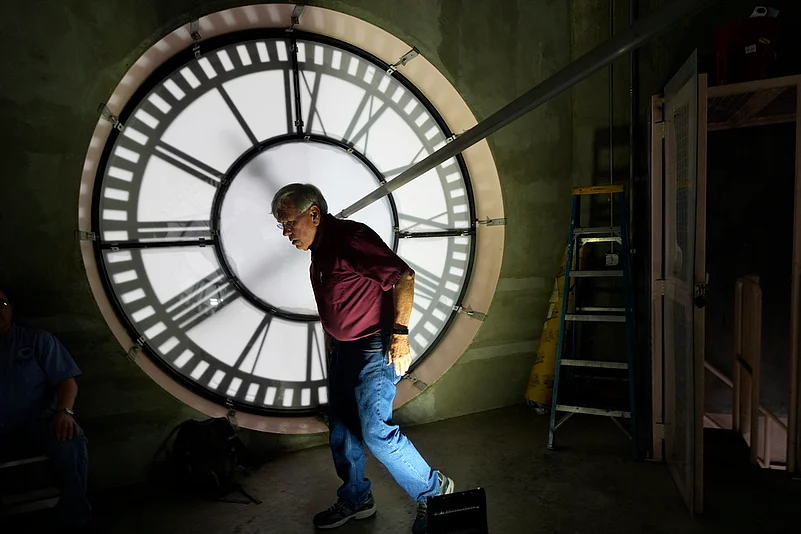As clocks prepare to "spring forward" for the onset of daylight saving time, you might be pondering: why do we change the clocks, year after year?
What if daylight saving time were made permanent, or better yet, what if there was no need for the time shift altogether?
Experts have long debated the two scenarios, with differing opinions on whether permanent standard time or permanent daylight saving time would be preferable.
As many individuals gear up to adjust their clocks forward, let's explore the potential outcomes if this biannual time change were eliminated altogether.
What is Standard Time?
Standard time, as defined by Time and Date, refers to the local time observed in a country or region when daylight saving time is not implemented.
According to the website, "More than 60% of the countries in the world use standard time all year. The remaining countries use DST during the summer months, generally setting clocks forward one hour from standard time."
According to the American Academy of Sleep Medicine (AASM), it is standard time that more closely corresponds to our body's internal clock.
The Illinois-based organization highlights that "The daily cycle of natural light and darkness is the most powerful timing cue to synchronize our body’s internal clock. When we receive more light in the morning and darkness in the evening, our bodies and nature are better aligned, making it easier to wake up for our daily activities and easier to fall asleep at night. Daylight saving time disrupts our internal clock, leading to sleep loss and poor sleep quality, which in turn lead to negative health consequences."
"For morning commuters and children heading off to school, dark mornings caused by permanent daylight saving time pose numerous safety concerns," the AASM says. "This would be especially problematic during the winter months when days grow increasingly shorter."
What is daylight saving time?
Daylight saving time, commonly known as "spring forward" and "fall back," involves adjusting the clocks twice a year, typically starting in spring and ending in fall.
According to the Energy Policy Act of 2005, daylight saving time commences on the second Sunday in March and concludes on the first Sunday in November. During these periods, clocks are either advanced or set back by one hour.
When is daylight saving time?
Daylight saving time is set to resume on March 10, 2024, with the second Sunday in March marking the official date when clocks will spring forward.
As this date approaches, the Chicago area will experience nearly 12 hours of sunlight per day, leading up to the spring equinox just a few days later.
Additionally, the summer solstice is scheduled for June 20, offering over 15 hours and 13 minutes of sunlight, with sunset around 8:29 p.m.
Afterward, days will gradually shorten until daylight saving time ends on November 3, 2024.
Do experts prefer daylight saving time or standard time?
Experts' preferences between daylight saving time and standard time have varied. Earlier proposed legislation advocated for permanent daylight saving time, but ultimately, that legislation failed to pass.
Despite the Department of Transportation's assertions of the benefits of daylight saving time, sleep experts have long expressed concerns about its impact on health. The American Academy of Sleep Medicine (AASM), for instance, has advocated for a transition to permanent standard time for years, citing the alignment of the human body clock with the natural environment as crucial for health and safety. Dr. M. Adeel Rishi, chair of the AASM Public Safety Committee, emphasized the risks associated with daylight saving time, stating that permanent standard time is the optimal choice.
Experts have pointed to a "growing body of evidence" supporting the benefits of permanent standard time.
Dr. James A. Rowley, president of the AASM, highlighted that “permanent standard time helps synchronize the body clock with the rising and setting of the sun. This natural synchrony is optimal for healthy sleep, and sleep is essential for health, mood, performance, and safety.”
It echoes similar perspectives from other institutions, such as the National Sleep Foundation, which says "seasonal time-changes are disruptive to sleep health and should be eliminated."
However, the Department of Transportation argues that daylight saving time offers numerous advantages. The DOT's website outlines the following benefits:
Daylight saving time conserves energy by extending daylight hours into the evenings, reducing the need for household lighting and appliance usage. With more people spending time outdoors during these extended daylight hours, electricity consumption at home is further reduced. Additionally, since sunrise occurs later in the morning during summer months, fewer lights are needed indoors upon waking up.
Daylight saving time contributes to saving lives and preventing traffic accidents as more individuals commute to school and work or run errands in daylight hours.
Moreover, it has been observed that daylight saving time helps in reducing crime rates. More people are engaged in activities during daylight hours, which serves as a deterrent to criminal activity that often occurs at night.
What would happen if daylight saving time was permanent?
If daylight saving time were made permanent, significant changes in daylight patterns would occur, such as during winter months in Illinois. Traditionally accustomed to early sunsets just after 4 p.m. in December, the absence of clock changes would alter this scenario. For instance, in 2023, under permanent daylight saving time, the earliest winter sunset would have shifted to December 8, 2023, at 5:21 p.m.
The most notable adjustment would be in the timing of sunrise. With the clock shifted forward by an hour, sunrise would be delayed until after 8 a.m. for a considerable portion of the winter season. This would mean darker mornings for commuters and students during their morning routines.
In fact, there would be a period spanning nearly two months, from December 4 to February 3, where sunrise wouldn't occur until after 8 a.m.
Since daylight saving time already extends daylight hours during the summer, the timing of the earliest sunrise (June 13) and latest sunset of the year(June 24) would remain unaffected.



























